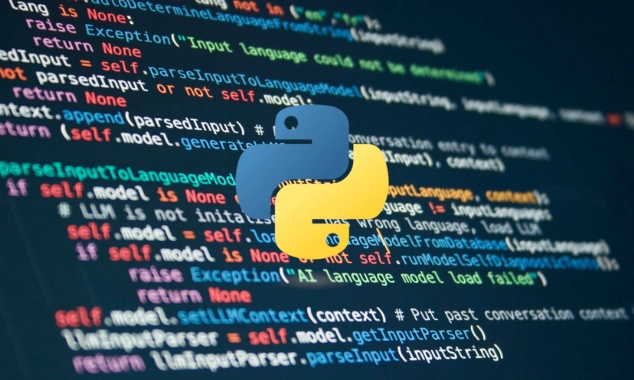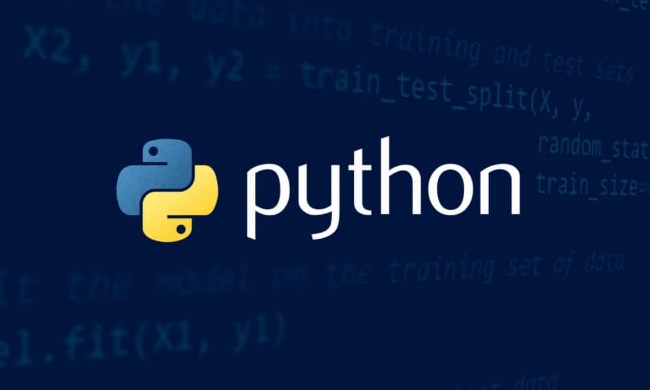The key to bypassing verification code lies in the complexity of the verification code and the website protection mechanism. 1. For simple verification codes, you can use Tesseract OCR for identification and improve accuracy through image preprocessing. 2. Faced with more complex verification codes, you can upload images to AI or manually identify them through third-party coding platforms such as cloud coding and 2Captcha services. 3. If the backend does not strictly verify, it can simulate the request to submit the forged verification code token directly to bypass the front-end verification. 4. Use automation tools such as Selenium to combine manual input to achieve process automation, which is suitable for fixed types or scenarios that require occasional intervention. Overall, Python has limited capabilities in strong verification codes such as reCAPTCHA v3, and strategies need to be selected depending on the specific situation.

To put it directly, the key point: Using Python to bypass verification codes (especially complex verification codes like reCAPTCHA) is not an easy task, especially as the protection mechanism of modern websites is getting stronger and stronger. But if you are facing simple image recognition or verification codes in a testing environment, there are still some ways to try.

1. Use OCR tool to identify simple verification codes
The verification codes of some websites are actually not complicated, such as only numerical letters, not many interference lines, and not messy backgrounds. At this time, you can use the OCR (Optical Character Recognition) tool to identify it.
Recommended tool: Tesseract OCR

Installation steps:
- Install Tesseract (you can use tesseract-ocr-setup on Windows)
- Install Python package:
pip install pytesseract
Sample code:

from PIL import Image import pytesseract # Open the verification code image img = Image.open('captcha.png') # Convert to text text = pytesseract.image_to_string(img) print(text)
suggestion:
- If the verification code is colored or has interference lines, you can first perform pre-processing operations such as grayscale processing and binarization.
- For complex verification codes, OCR is basically invalid and needs to be replaced with other methods.
2. Use a third-party coding platform
For slightly more complex verification codes, such as distortion, interference lines, slider verification, etc., you will generally choose to connect to the "coding platform", that is, the service that artificial team or AI model can help you identify verification codes.
Common platforms:
- Cloud coding (Yundama)
- Code Rabbit
- Good code
- Some foreign platforms such as 2Captcha and Anti-Captcha
Usage process:
- Register an account to get API key
- Download the SDK or refer to the document to upload the image
- Wait for the recognition result to return
Example pseudocode:
import some_captcha_service result = some_captcha_service.solve_captcha('captcha.png') print(result)
Notice:
- Some platforms support advanced functions such as slider verification, reCAPTCHA's token acquisition and other
- The charging model is common, with a per-view fee, and the price ranges from a few to a few cents.
- API keys need to be protected from leakage
3. Simulate user behavior bypass verification logic (non-cracked)
Sometimes, the verification code is just a verification link in the front-end, and the back-end does not strictly verify it. In this case, the POST request with verification code token can be directly sent through the analysis request interface to skip browser interaction.
Applicable scenarios:
- The website uses Google reCAPTCHA, but the backend does not verify the g-recaptcha-response field
- You can view the request structure through package capture tools (such as Fiddler, Charles).
- Fake a seemingly valid token and submit it
Example ideas:
- Crawl the site-key of reCAPTCHA in the page
- Use automation tools to simulate clicks and get tokens (such as Selenium stealth plugin)
- Bring token into POST request to submit a form
hint:
- This method is not really "cracking" the verification code, but rather takes advantage of the lack of server verification.
- This method is not successful in actual projects, because most formal websites will verify the legitimacy of tokens.
4. Automation tools assist in processing verification code
If you are doing automated tasks, such as crawlers or automated registration, you can consider combining tools like Selenium or Playwright to allow the program to automatically complete the verification code input.
Suitable for:
- The verification code type is fixed (such as SMS verification code)
- There is a verification code input box on the page, but it is difficult to identify.
- You are willing to intervene manually, such as a temporary pop-up window for you to enter
Example practice:
- Open a web page with Selenium
- The program detects whether the verification code page appears
- Pop-up window reminds users to enter the verification code manually
- Continue to follow-up operations after input
benefit:
- No reliance on identification technology, suitable for various verification codes
- With just a few manual interventions, the overall process remains automated
Basically these common methods. Python has limited ability to process verification codes, but the key is to look at the complexity of the verification code and the website's defense strategy. If the target website uses the latest hCaptcha or reCAPTCHA v3, it will not be so easy to bypass it, and you have to find another way.
The above is the detailed content of Bypassing CAPTCHAs with Python. For more information, please follow other related articles on the PHP Chinese website!

Hot AI Tools

Undress AI Tool
Undress images for free

Undresser.AI Undress
AI-powered app for creating realistic nude photos

AI Clothes Remover
Online AI tool for removing clothes from photos.

Clothoff.io
AI clothes remover

Video Face Swap
Swap faces in any video effortlessly with our completely free AI face swap tool!

Hot Article

Hot Tools

Notepad++7.3.1
Easy-to-use and free code editor

SublimeText3 Chinese version
Chinese version, very easy to use

Zend Studio 13.0.1
Powerful PHP integrated development environment

Dreamweaver CS6
Visual web development tools

SublimeText3 Mac version
God-level code editing software (SublimeText3)

Hot Topics
 Polymorphism in python classes
Jul 05, 2025 am 02:58 AM
Polymorphism in python classes
Jul 05, 2025 am 02:58 AM
Polymorphism is a core concept in Python object-oriented programming, referring to "one interface, multiple implementations", allowing for unified processing of different types of objects. 1. Polymorphism is implemented through method rewriting. Subclasses can redefine parent class methods. For example, the spoke() method of Animal class has different implementations in Dog and Cat subclasses. 2. The practical uses of polymorphism include simplifying the code structure and enhancing scalability, such as calling the draw() method uniformly in the graphical drawing program, or handling the common behavior of different characters in game development. 3. Python implementation polymorphism needs to satisfy: the parent class defines a method, and the child class overrides the method, but does not require inheritance of the same parent class. As long as the object implements the same method, this is called the "duck type". 4. Things to note include the maintenance
 Python Function Arguments and Parameters
Jul 04, 2025 am 03:26 AM
Python Function Arguments and Parameters
Jul 04, 2025 am 03:26 AM
Parameters are placeholders when defining a function, while arguments are specific values ??passed in when calling. 1. Position parameters need to be passed in order, and incorrect order will lead to errors in the result; 2. Keyword parameters are specified by parameter names, which can change the order and improve readability; 3. Default parameter values ??are assigned when defined to avoid duplicate code, but variable objects should be avoided as default values; 4. args and *kwargs can handle uncertain number of parameters and are suitable for general interfaces or decorators, but should be used with caution to maintain readability.
 Explain Python generators and iterators.
Jul 05, 2025 am 02:55 AM
Explain Python generators and iterators.
Jul 05, 2025 am 02:55 AM
Iterators are objects that implement __iter__() and __next__() methods. The generator is a simplified version of iterators, which automatically implement these methods through the yield keyword. 1. The iterator returns an element every time he calls next() and throws a StopIteration exception when there are no more elements. 2. The generator uses function definition to generate data on demand, saving memory and supporting infinite sequences. 3. Use iterators when processing existing sets, use a generator when dynamically generating big data or lazy evaluation, such as loading line by line when reading large files. Note: Iterable objects such as lists are not iterators. They need to be recreated after the iterator reaches its end, and the generator can only traverse it once.
 Python `@classmethod` decorator explained
Jul 04, 2025 am 03:26 AM
Python `@classmethod` decorator explained
Jul 04, 2025 am 03:26 AM
A class method is a method defined in Python through the @classmethod decorator. Its first parameter is the class itself (cls), which is used to access or modify the class state. It can be called through a class or instance, which affects the entire class rather than a specific instance; for example, in the Person class, the show_count() method counts the number of objects created; when defining a class method, you need to use the @classmethod decorator and name the first parameter cls, such as the change_var(new_value) method to modify class variables; the class method is different from the instance method (self parameter) and static method (no automatic parameters), and is suitable for factory methods, alternative constructors, and management of class variables. Common uses include:
 How to handle API authentication in Python
Jul 13, 2025 am 02:22 AM
How to handle API authentication in Python
Jul 13, 2025 am 02:22 AM
The key to dealing with API authentication is to understand and use the authentication method correctly. 1. APIKey is the simplest authentication method, usually placed in the request header or URL parameters; 2. BasicAuth uses username and password for Base64 encoding transmission, which is suitable for internal systems; 3. OAuth2 needs to obtain the token first through client_id and client_secret, and then bring the BearerToken in the request header; 4. In order to deal with the token expiration, the token management class can be encapsulated and automatically refreshed the token; in short, selecting the appropriate method according to the document and safely storing the key information is the key.
 What are Python magic methods or dunder methods?
Jul 04, 2025 am 03:20 AM
What are Python magic methods or dunder methods?
Jul 04, 2025 am 03:20 AM
Python's magicmethods (or dunder methods) are special methods used to define the behavior of objects, which start and end with a double underscore. 1. They enable objects to respond to built-in operations, such as addition, comparison, string representation, etc.; 2. Common use cases include object initialization and representation (__init__, __repr__, __str__), arithmetic operations (__add__, __sub__, __mul__) and comparison operations (__eq__, ___lt__); 3. When using it, make sure that their behavior meets expectations. For example, __repr__ should return expressions of refactorable objects, and arithmetic methods should return new instances; 4. Overuse or confusing things should be avoided.
 How does Python memory management work?
Jul 04, 2025 am 03:26 AM
How does Python memory management work?
Jul 04, 2025 am 03:26 AM
Pythonmanagesmemoryautomaticallyusingreferencecountingandagarbagecollector.Referencecountingtrackshowmanyvariablesrefertoanobject,andwhenthecountreacheszero,thememoryisfreed.However,itcannothandlecircularreferences,wheretwoobjectsrefertoeachotherbuta
 Python `@property` decorator
Jul 04, 2025 am 03:28 AM
Python `@property` decorator
Jul 04, 2025 am 03:28 AM
@property is a decorator in Python used to masquerade methods as properties, allowing logical judgments or dynamic calculation of values ??when accessing properties. 1. It defines the getter method through the @property decorator, so that the outside calls the method like accessing attributes; 2. It can control the assignment behavior with .setter, such as the validity of the check value, if the .setter is not defined, it is read-only attribute; 3. It is suitable for scenes such as property assignment verification, dynamic generation of attribute values, and hiding internal implementation details; 4. When using it, please note that the attribute name is different from the private variable name to avoid dead loops, and is suitable for lightweight operations; 5. In the example, the Circle class restricts radius non-negative, and the Person class dynamically generates full_name attribute






